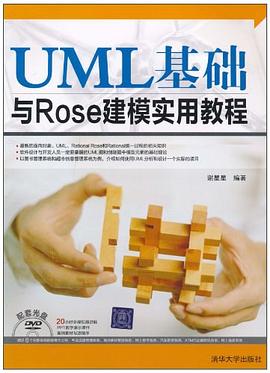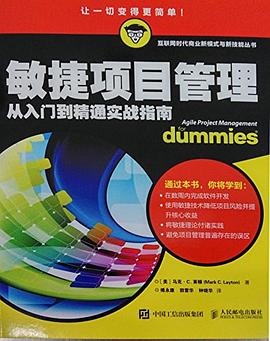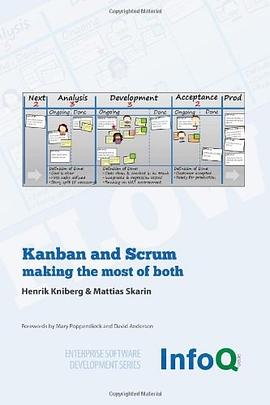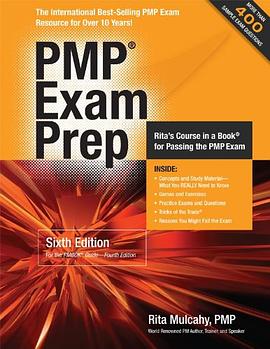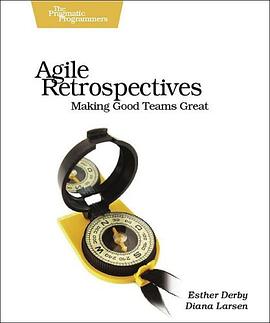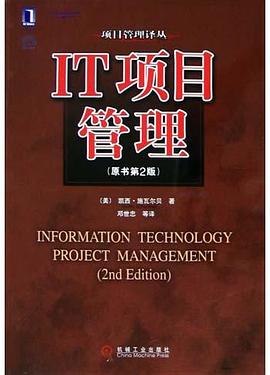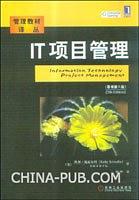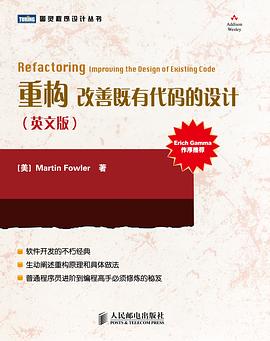

具体描述
重构,一言以蔽之,就是在不改变外部行为的前提下,有条不紊地改善代码。多年前,正是本书原版的出版,使重构终于从编程高手们的小圈子走出,成为众多普通程序员日常开发工作中不可或缺的一部分。本书也因此成为与《设计模式》齐名的经典著作,被译为中、德、俄、日等众多语言,在世界范围内畅销不衰。
本书凝聚了软件开发社区专家多年摸索而获得的宝贵经验,拥有不因时光流逝而磨灭的价值。今天,无论是重构本身,业界对重构的理解,还是开发工具对重构的支持力度,都与本书最初出版时不可同日而语,但书中所蕴涵的意味和精华,依然值得反复咀嚼,而且往往能够常读常新。
作者简介
Martin Fowler 世界软件开发大师,在面向对象分析设计、UML、模式、XP和重构等领域都有卓越贡献,现为著名软件开发咨询公司ThoughtWorks的首席科学家。他的多部著作《分析模式》、《UML精粹》和《企业应用架构模式》等都已经成为脍炙人口的经典。
其他参编者
Kent Beck 软件开发方法学的泰斗,极限编程的创始人。他是Three Rivers Institute公司总裁,也是Agitar Software的成员。
John Brant和Don Roberts The Refactory公司的创始人,Refactoring Browser http://st-www.cs.illinois.edu/users/brant/Refactory/)的开发者,多年来一直从事研究重构的实践与理论。
William Opdyke 目前在朗讯贝尔实验室工作,他写的关于面向对象框架的博士论文是重构方面的第一篇著名文章。
目录信息
The Starting Point 1
The First Step in Refactoring 7
Decomposing and Redistributing the Statement Method 8
Replacing the Conditional Logic on Price Code with Polymorphism 34
Final Thoughts 52
Chapter 2: Principles in Refactoring 53
Defining Refactoring 53
Why Should You Refactor 55
When Should You Refactor 57
What Do I Tell My Manager 60
Problems with Refactoring 62
Refactoring and Design 66
Refactoring and Performance 69
Where Did Refactoring Come From 71
Chapter 3: Bad Smells in Code (by Kent Beck and Martin Fowler) 75
Duplicated Code 76
Long Method 76
Large Class 78
Long Parameter List 78
Divergent Change 79
Shotgun Surgery 80
Feature Envy 80
Data Clumps 81
Primitive Obsession 81
Switch Statements 82
Parallel Inheritance Hierarchies 83
Lazy Class 83
Speculative Generality 83
Temporary Field 84
Message Chains 84
Middle Man 85
Inappropriate Intimacy 85
Alternative Classes with Different Interfaces 85
Incomplete Library Class86
Data Class 86
Refused Bequest 87
Comments 87
Chapter 4: Building Tests 89
The Value of Self-testing Code 89
The JUnit Testing Framework 91
Adding More Tests 97
Chapter 5: Toward a Catalog of Refactorings
Format of the Refactorings~103
Finding References 105
How Mature Are These Refactorings 106
Chapter 6: Composing Methods 109
Extract Method 110
Inline Method 117
Inline Temp 119
Replace Temp with Query 120
Introduce Explaining Variable 124
Split Temporary Variable 128
Remove Assignments to Parameters 131
Replace Method with Method Object 135
Substitute Algorithm 139
Chapter 7: Moving Features Between Objects 141
Move Method 142
Move Field 146
Extract Class 149
Inline Class 154
Hide Delegate 157
Remove Middle Man 160
Introduce Foreign Method 162
Introduce Local Extension 164
Chapter 8: Organizing Data 169
Self Encapsulate Field 171
Replace Data Value with Object 175
Change Value to Reference 179
Change Reference to Value 183
Replace Array with Object 186
Duplicate Observed Data 189
Change Unidirectional Association to Bidirectional 197
Change Bidirectional Association to Unidirectional 200
Replace Magic Number with Symbolic Constant 204
Encapsulate Field 206
Encapsulate Collection 208
Replace Record with Data Class 217
Replace Type Code with Class 218
Replace Type Code with Subclasses 223
Replace Type Code with State/Strategy 227
Replace Subclass with Fields 232
Chapter 9: Simplifying Conditional Expressions .237
Decompose Conditional 238
Consolidate Conditional Expression 240
Consolidate Duplicate Conditional Fragments 243
Remove Control Flag 245
Replace Nested Conditional with Guard Clauses 250
Replace Conditional with Polymorphism 255
Introduce Null Object 260
Introduce Assertion 267
Chapter 10: Making Method Calls Simpler 271
Rename Method 273
Add Parameter 275
Remove Parameter 277
Separate Query from Modifier 279
Parameterize Method 283
Replace Parameter with Explicit Methods 285
Preserve Whole Object 288
Replace Parameter with Method 292
Introduce Parameter Object 295
Remove Setting Method 300
Hide Method 303
Replace Constructor with Factory Method 304
Encapsulate Downcast 308
Replace Error Code with Exception 310
Replace Exception with Test 315
Chapter 11: Dealing with Generalization319
Pull Up Field 320
Pull Up Method 322
Pull Up Constructor Body 325
Push Down Method 328
Push Down Field 329
Extract Subclass 330
Extract Superclass 336
Extract Interface 341
Collapse Hierarchy 344
Form Template Method 345
Replace Inheritance with Delegation 352
Replace Delegation with Inheritance 355
Chapter 12: Big Refactorings (by Kent Beck and Martin Fowler) 359
Tease Apart Inheritance 362
Convert Procedural Design to Objects 368
Separate Domain from Presentation 370
Extract Hierarchy 375
Chapter 13: Refactoring, Reuse, and Reality (by William Opdyke) 379
A Reality Check 380
Why Are Developers Reluctant to Refactor
Their Programs 381
A Reality Check (Revisited) 394
Resources and References for Refactoring 394
Implications Regarding Software Reuse and Technology Transfer 395
A Final Note397
References 397
Chapter 14: Refactoring Tools (by Don Roberts and John Brant) 401
Refactoring with a Tool 401
Technical Criteria for a Refactoring Tool 403
Practical Criteria for a Refactoring Tool 405
Wrap Up 407
Chapter 15: Putting It All Together (by Kent Beck) 409
References 413
List of Soundbites 417
Index 419
· · · · · · (收起)
读后感
书中说过重构的思想由来已久,只不过没人写成书籍罢了。 个人感觉如果你看完这本书只看到了思想,那你就错过了很多有价值的东西。小步骤的重构,如何最大限度的不引入bug才是书中要告诉大家的。像了解重构思想,只看前几章就够了。我个人认为书中最有价值的东西恰恰是进行重构...
评分纵览武侠江湖,制胜法门不外两项,内功和外功。二者得一可天下去得,但最终皆入内外兼修之境 倚天是自内而外,先修内功九阳真经,然后以此为基础,加上太极拳和太极剑,最终成就天下第一高手 笑傲是自外而内,先学独孤九剑,后学吸星大法,最后学易筋经。 神雕也不外如是,玉女...
评分第一遍于两年前, 让我了解到bad smell们, 还有那冗长的手法catalog. 最近第二遍, 回顾过去, 虽然bad smell的提示和重构操作已经完全融入现代IDE中了, 但总结下来它对我的影响还有如下: 1.我常常通过重构来加深对代码的理解. 2.让我变成一个十足的代码洁癖者, "刻"代码上瘾...
评分这本书一开始读的是英文,不过Martin Fowler本身好像就不是一个Native的英语国家的人。所以他的英文写的也是比较容易懂的。 这个书第一章是一个完整的重构的例子,虽然现实中不可能如此完美而孜孜不倦的重构,不过作为一个例子,是非常的好的,让你能为重构的力量所震...
评分《重构》给我最大的收获,其实是想法而非技巧。 开发人员的完美主义倾向,容易变成他们做Big Design Up Front的驱动力。而在现实的环境中,时间、资源等约束条件,通常不会允许我们进行过于详细的设计。 我认为最好的做法是,轻量级的设计 + 适当的重构,迭代地开发出满足各...
用户评价
2013-07-20断断续续终于看完一遍了,后面就放到桌子上当作参考手册了,需要的时候翻翻//淘宝买的,很久没买书了。纸质的有点臭,在桌子上摊开有段时间了,没气味了。
评分2013-07-20断断续续终于看完一遍了,后面就放到桌子上当作参考手册了,需要的时候翻翻//淘宝买的,很久没买书了。纸质的有点臭,在桌子上摊开有段时间了,没气味了。
评分主要是代码层次的经验,大牛间逐渐形成的一些无形规范,读的很快,有时间可以再翻下,回头对照自己的代码。
评分主要是代码层次的经验,大牛间逐渐形成的一些无形规范,读的很快,有时间可以再翻下,回头对照自己的代码。
评分2013-07-20断断续续终于看完一遍了,后面就放到桌子上当作参考手册了,需要的时候翻翻//淘宝买的,很久没买书了。纸质的有点臭,在桌子上摊开有段时间了,没气味了。
相关图书
本站所有内容均为互联网搜索引擎提供的公开搜索信息,本站不存储任何数据与内容,任何内容与数据均与本站无关,如有需要请联系相关搜索引擎包括但不限于百度,google,bing,sogou 等
© 2025 book.quotespace.org All Rights Reserved. 小美书屋 版权所有


